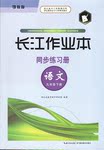题目内容
1.Home-working opportunities and __________(灵活的)working hours are top concerns for the working mothers.
2.Many people were waiting anxiously and they looked ______________ (disappoint).
3.The CPC and the KMT Party will continue to ______________ (strength) exchanges based on 1992 Consensus(共识).
4.Because final exams are coming, most students are under a lot of p_____________.
5.He gave a detailed ______________(描述) of what he had witnessed yesterday.
6.Life’s ______________ are not supposed to paralyze you; they’re supposed to help you discover who you are. (something that tests strength, skill or ability)
7.There is a growing _______________ (tend) for people to work at home instead of in offices.
8.His wound became _______________ (infect) with a new virus, so he had to be kept in hospital.
9.To some degree, only those people who are _______________ (ambition) can have their own careers.
10.We should submit our plans to the committee for _______________(approve).
 长江作业本同步练习册系列答案
长江作业本同步练习册系列答案
